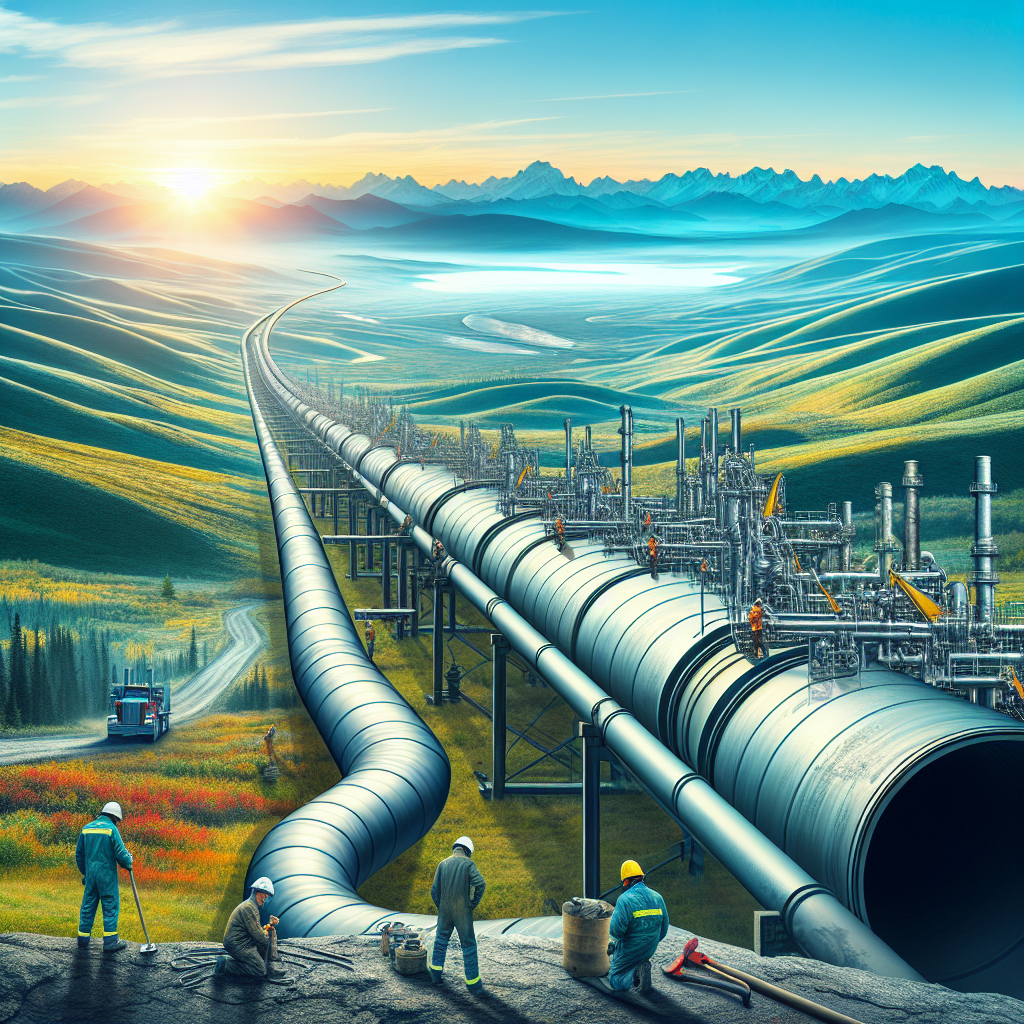Transnational Energy Pipelines Shape Africa’s Path to Industrial Growth
Upon completion, EACOP will enable Uganda to export up to 246,000 barrels of oil per day, dramatically shifting the country’s economic trajectory. But its importance goes beyond export logistics.

- Country:
- South Africa
Africa’s energy landscape is undergoing a profound transformation, driven by renewed urgency to combat energy poverty, attract infrastructure investment, and harness the continent’s vast hydrocarbon wealth. In June 2025 alone, three major pipeline milestones made headlines: the East African Crude Oil Pipeline (EACOP) reached 60% completion, the Republic of Congo signed a pipeline cooperation agreement with Russia, and Nigeria and Equatorial Guinea inked a landmark deal to advance a joint natural gas project.
These developments come just months ahead of African Energy Week (AEW) 2025, scheduled for September 29–October 3 in Cape Town, South Africa, where energy leaders will gather under the banner “Invest in African Energies” to chart a course for regional integration and industrialization.
EACOP: East Africa’s Export Gateway Nears Reality
Spanning 1,443 kilometers, the East African Crude Oil Pipeline is poised to become the world’s longest heated crude pipeline, linking Uganda’s oil fields in the Lake Albert basin to the port of Tanga in Tanzania. The project—already 60% complete—includes significant progress in land acquisition, environmental clearance, and physical construction.
Upon completion, EACOP will enable Uganda to export up to 246,000 barrels of oil per day, dramatically shifting the country’s economic trajectory. But its importance goes beyond export logistics. EACOP is expected to:
-
Create thousands of direct and indirect jobs
-
Stimulate local procurement and services
-
Trigger complementary infrastructure, such as roads, power lines, and storage
-
Boost fiscal revenues that can be invested in education, healthcare, and energy access
At AEW 2025, EACOP will be highlighted as a flagship model of how strategic energy infrastructure can deliver shared growth while balancing environmental and social concerns.
Congo-Russia Pipeline Deal: A New Strategic Axis Emerges
In a bold geopolitical shift, the Republic of Congo signed a pipeline construction agreement with Russia, targeting the development of the Pointe-Noire–Loutete–Maloukou–Trechot corridor. This three-year plan outlines joint planning, financing, and operational responsibilities, ushering in Russian capital and expertise into Central Africa’s midstream sector.
This partnership reflects a growing trend of African nations diversifying external alliances beyond traditional Western stakeholders. By tapping into Russian technical and financial support, Congo seeks to:
-
Accelerate monetization of its crude reserves
-
Expand export capacity for oil and refined fuels
-
Build regional energy self-reliance through LPG and gas delivery networks
Critically, this move is in line with broader continental efforts to reshape Africa’s infrastructure diplomacy—prioritizing transparency, mutual development benefits, and alignment with Agenda 2063, the African Union’s blueprint for inclusive growth.
Nigeria–Equatorial Guinea: Gas Diplomacy for West Africa
In West Africa, Nigeria and Equatorial Guinea signed a joint natural gas pipeline agreement on June 18, signaling a renewed focus on regional gas integration. The deal aims to fast-track infrastructure that:
-
Increases cross-border gas trade
-
Enhances energy access for industrial and domestic use
-
Strengthens West Africa’s position as a gas export hub
This development complements existing infrastructure such as the West African Gas Pipeline (WAGP)—which transports Nigerian gas to Benin, Togo, and Ghana—and supports power generation and industry across the region.
Additionally, the Mozambique–South Africa Gas Pipeline, operated by Republic of Mozambique Pipeline Investments Company, expanded its footprint by launching a new regional office in Maputo, signaling growing efforts to strengthen Southern African gas markets and energy resilience.
Pipelines as a Tool Against Energy Poverty
Despite holding significant energy resources, Africa still accounts for just 3.3% of global power generation—a figure starkly disproportionate to its 17% share of the global population. Pipelines have emerged as powerful tools to bridge this gap by delivering fuel where it's needed most—from oil-rich basins to energy-starved cities and rural communities.
“New pipelines can transport LPG and gas into regions still reliant on biomass, improving health, reducing deforestation, and spurring entrepreneurship,” said NJ Ayuk, Executive Chairman of the African Energy Chamber.
Ayuk stressed the importance of multi-purpose pipelines, designed to support not only exports but also domestic energy access, industrial growth, and cleaner fuels for cooking and manufacturing.
Looking Ahead to AEW 2025: A Pipeline for Every Region?
At AEW 2025, pipelines will take center stage as symbols of connectivity, cooperation, and continental transformation. Key sessions will address:
-
Regulatory reforms to fast-track infrastructure approvals
-
Public-private financing models for large-scale energy projects
-
Technology partnerships for efficiency, safety, and environmental compliance
-
Case studies on how to ensure pipeline projects contribute to local value chains, job creation, and skills development
As Africa marches toward its energy independence and climate resilience goals, the pipeline boom of 2025 reflects a continent ready to redefine its future through infrastructure, inclusion, and innovation.
- READ MORE ON:
- African Energy Week 2025
- EACOP
- Congo-Russia pipeline
- Nigeria-Equatorial Guinea gas
- Africa energy infrastructure
- midstream projects
- oil and gas pipelines
- regional energy integration
- AEW Cape Town
- Agenda 2063
- energy poverty
- hydrocarbon development
- transnational cooperation
- LPG access
- NJ Ayuk










